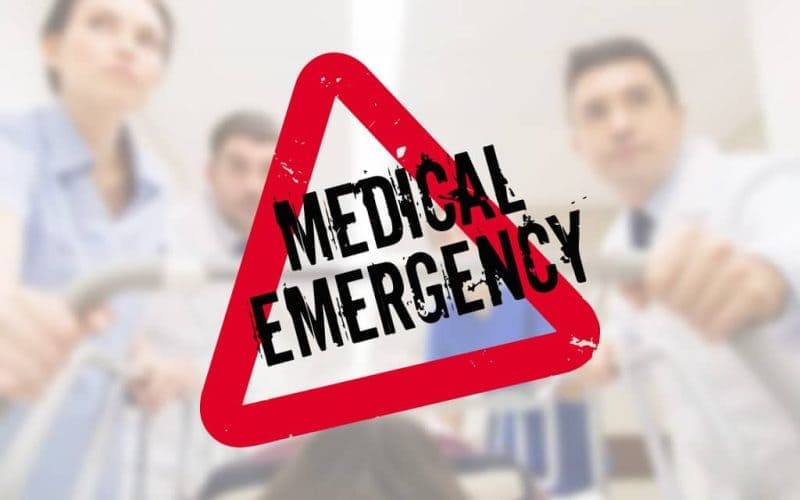What are the symptoms of sepsis?
Sepsis is a serious and potentially life-threatening condition caused by the body’s extreme response to an infection. Symptoms can vary but generally include:
- Fever or Hypothermia: Elevated body temperature (fever) or a significantly lower than normal body temperature (hypothermia).
- Chills and Shivering: Severe chills or shivering, often accompanied by feeling cold despite having a fever.
- Rapid Heart Rate: Increased heart rate (tachycardia), often above 90 beats per minute.
- Rapid Breathing: Increased respiratory rate (tachypnea), with rapid and shallow breathing.
- Confusion or Disorientation: Altered mental state, including confusion, disorientation, or difficulty staying awake.
- Extreme Weakness: General feeling of weakness, fatigue, or malaise.
- Low Blood Pressure: Hypotension, or low blood pressure, which can lead to dizziness, lightheadedness, or fainting.
- Skin Changes: Skin that may be warm and flushed or cold and clammy, with potential for rash or mottled skin.
- Decreased Urine Output: Reduced or no urine output, indicating possible kidney dysfunction.
- Nausea and Vomiting: Gastrointestinal symptoms such as nausea, vomiting, or diarrhea.
- Pain or Discomfort: Generalized pain or discomfort, which can be diffuse or localized depending on the source of infection.
Sepsis is a medical emergency that requires prompt treatment. If sepsis is suspected, immediate medical attention is essential to manage the condition and address the underlying infection. Treatment typically involves antibiotics, intravenous fluids, and supportive care to stabilize blood pressure and organ function.
What are the causes of sepsis?
Sepsis is caused by the body’s extreme response to an infection. The infection can originate from various sources, and when the body’s immune system overreacts, it can lead to widespread inflammation and potentially life-threatening complications. Common causes and sources of sepsis include:
- Bacterial Infections: The most common cause of sepsis. Bacteria can enter the bloodstream from various infections, such as pneumonia, urinary tract infections, or skin infections such as cellulitis.
- Viral Infections: Although less common than bacterial infections, certain viral infections can also lead to sepsis. Examples include severe influenza or COVID-19.
- Fungal Infections: Fungal infections, particularly in immunocompromised individuals, can cause sepsis. Common fungi involved include Candida species.
- Parasitic Infections: Though rare, parasitic infections can also lead to sepsis, particularly in individuals with weakened immune systems.
- Infections from Medical Devices: Infections related to medical devices, such as central lines or catheters, can introduce bacteria into the bloodstream and lead to sepsis.
- Wounds and Injuries: Severe or infected wounds, surgical incisions, or trauma can serve as entry points for pathogens that may lead to sepsis.
- Chronic Conditions: Individuals with chronic health conditions such as diabetes, kidney disease, or liver disease may be at higher risk for infections that could lead to sepsis.
- Immune System Disorders: Conditions that impair the immune system, such as cancer or autoimmune diseases, can increase susceptibility to infections and sepsis.
- Post-Surgical Infections: Infections that occur after surgery can lead to sepsis, particularly if the infection is not promptly addressed.
Sepsis is a serious condition that requires immediate medical attention. Prompt identification and treatment of the underlying infection, along with supportive care, are crucial to managing and reducing the risk of complications associated with sepsis.
What is the treatment for sepsis?
Treatment for sepsis is urgent and typically involves a multi-faceted approach aimed at addressing the infection, stabilizing the body’s functions, and supporting overall recovery. The primary components of sepsis treatment include:
- Antibiotics: Immediate administration of broad-spectrum antibiotics to combat the infection causing sepsis. The specific antibiotics may be adjusted based on the results of cultures and sensitivity tests.
- Intravenous (IV) Fluids: Administration of IV fluids to maintain blood pressure and ensure adequate blood flow to vital organs. This helps prevent or treat septic shock, which can result from low blood pressure.
- Vasopressors: If fluid resuscitation alone is insufficient to maintain blood pressure, vasopressors may be used to constrict blood vessels and increase blood pressure. Common vasopressors include norepinephrine or epinephrine.
- Supportive Care: Oxygen therapy and mechanical ventilation may be needed if sepsis affects breathing. Other supportive measures include monitoring and managing blood glucose levels, electrolyte imbalances, and organ functions.
- Source Control: Identifying and addressing the source of infection is critical. This may involve surgical procedures to drain abscesses, remove infected tissue, or manage infections related to medical devices.
- Medications: Additional medications may be used to support organ function, manage symptoms, or treat underlying conditions. This can include medications to support heart function or treat coagulopathy (blood clotting disorders).
- Nutritional Support: Ensuring adequate nutrition through enteral (tube feeding) or parenteral (IV nutrition) methods may be necessary for patients who cannot eat or digest food normally.
- Monitoring and Care: Intensive monitoring and care in a hospital setting, often in an intensive care unit (ICU), are crucial for tracking progress, adjusting treatments, and managing complications.
- Rehabilitation and Follow-Up: After the acute phase of sepsis, ongoing rehabilitation and follow-up care may be needed to address any long-term effects or complications, such as organ dysfunction or physical impairments.
Prompt and aggressive treatment is essential to improve outcomes and reduce the risk of severe complications or death associated with sepsis. Early recognition and intervention significantly enhance the chances of recovery.

Leave a Reply
You must be logged in to post a comment.